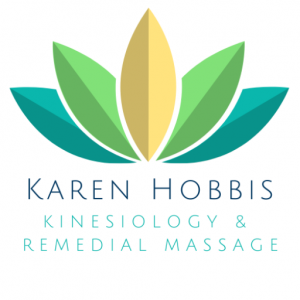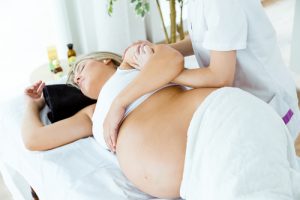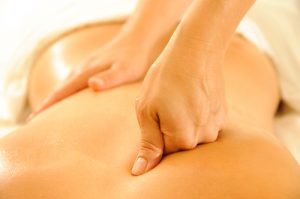Pregnancy Massage
Pregnancy massage has the same goals as regular massage –
- To relax tense muscles and ease sore spots;
- Improve circulation and mobility; and
- Bring about a sense of relaxation and an improved state of mind.
It is also tailored specifically to the needs of pregnant women and their changing bodies. Carrying a baby changes your centre of gravity and puts a lot of stress on your back, knees, neck, abdominal muscles, and shoulders. Pregnancy also relaxes your ligaments, so that your pelvic joints are less stable. All of of these changes can bring about muscle, joint and ligament pain from the new and different stresses placed on the body.
It is important to note that continuing to receive massages from your regular massage therapist may no longer be appropriate during pregnancy if the therapist is not specifically qualified in pregnancy massage, or does not know how to position you safely. There are areas of the body where massage must be avoided so as not to stimulate contractions. The massage also needs to be gentler than you may be used to, to ensure the safety of the baby and to prevent stress on your circulatory system (which is already working overtime). Some aromatherapy oils must also be avoided.
As a trained NutureLife Practitioner, I can target those sore spots and provide relief, while knowing which areas and what techniques to avoid.
Optimal comfort during a pregnancy massage
Some women find it uncomfortable to lie facedown right from the start of pregnancy because of their breasts feel more tender. It is also difficult to lie facedown on a traditional massage table once your belly has started to grow. It isn’t recommended that you lie flat on your back either, particularly once you’re past mid-pregnancy, as you can compress the vein that returns blood to the heart, and therefore restricting oxygenated blood to your baby.
For these reasons, once you are no longer comfortable lying on your stomach, or you are midway through your pregnancy (whichever comes first), you will receive your massage in a side-lying position with pillows and wedges for support. This position provides the optimum positioning for your spine and pelvis for receiving massage and you will find the position to be deeply relaxing and still incredibly effective.
Massage can be extremely beneficial at any stage of your pregnancy, when performed by a fully qualified Pregnancy Massage Therapist. Note that in instances of a high-risk pregnancy, I may require clearance from your doctor or midwife before treating you.
Is massage safe during the first trimester?
The common misconception exists that women in their first trimester are unable to receive a massage treatment, a myth which is often reinforced by massage therapists that are not qualified to provide pregnancy specific massages.
As a qualified NutureLife® Practitioner I am able to assist all women during their pregnancy whether they are in their first trimester or beyond. The specific benefits of receiving massage during the first pregnancy include:
- Helping with headaches associated with a change in hormones during the first trimester;
- Reducing hip, back, shoulder and neck pain (some which can be pre-existing prior to pregnancy and need treatment to continue through pregnancy);
- Stabilising mild nausea;
- Improving sleep patterns and reduce fatigue;
- Reducing stress and anxiety; and
- Beginning to help create the mother-baby connection.
Postnatal massage
It is as important to care for yourself during the postpartum period as it is during pregnancy. Massage can help you deal with the physical demands of caring for your newborn by:
- Easing muscle tension, especially in the neck, shoulders, and back;
- Increasing energy / decreasing fatigue;
- Improving sleep;
- Improving mood; and
- Improving breastfeeding (assisting with the milk letdown by reducing tension).
I understand it can be difficult to find time for yourself during this period, but the benefits are well worth it.
After a vaginal birth, postnatal massage can be performed as soon as you feel up to it. This may be after only a few days, or can be after quite a few weeks if you have suffered significant perineal tearing. After a caesarean section (c-section) delivery, it is recommended that you do not have a massage for 6 weeks post surgery, or after you have doctors clearance to do so.
Book Now
Click for calendar availability
Call Now
0414 818 836
Contact
Email Enquiry





